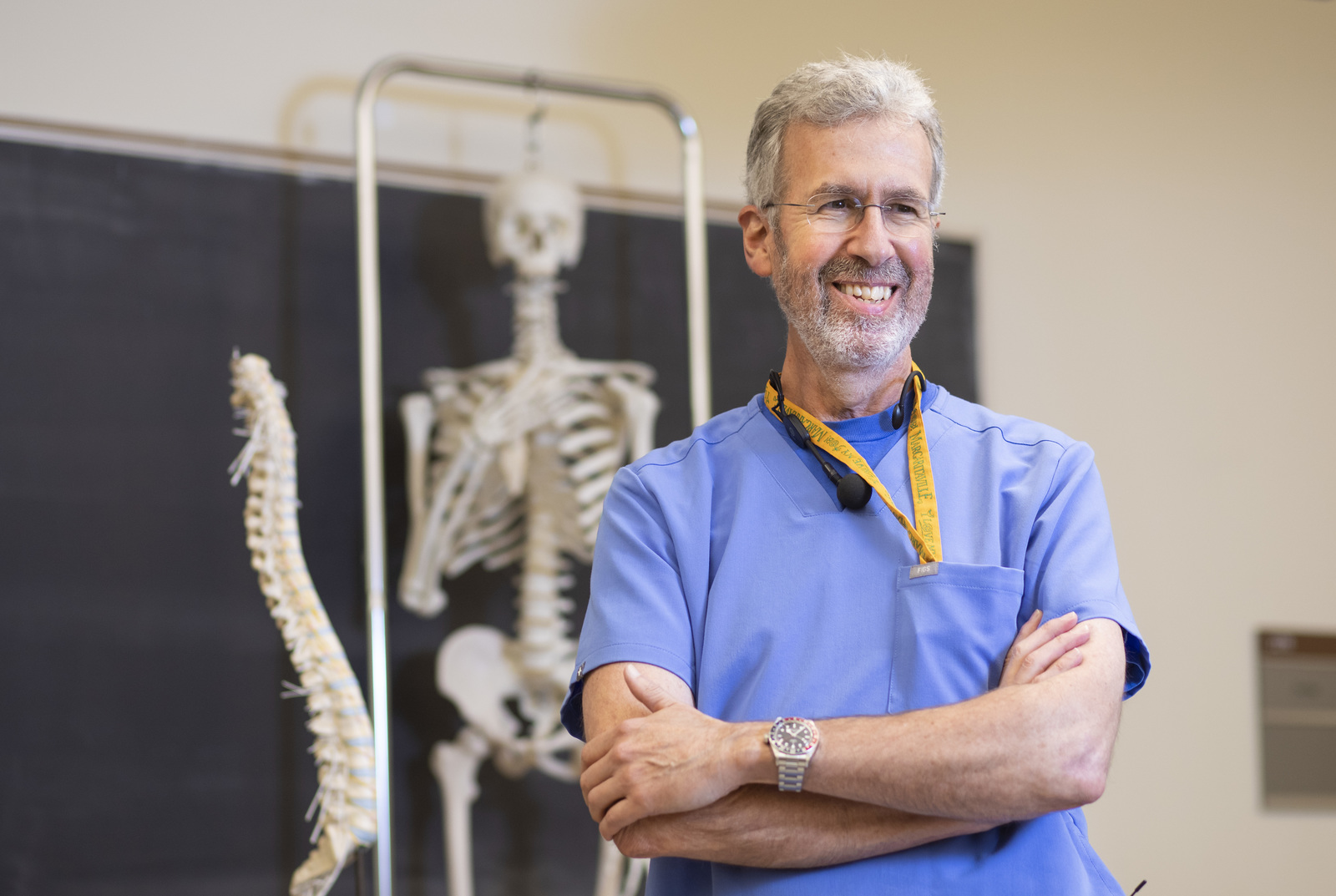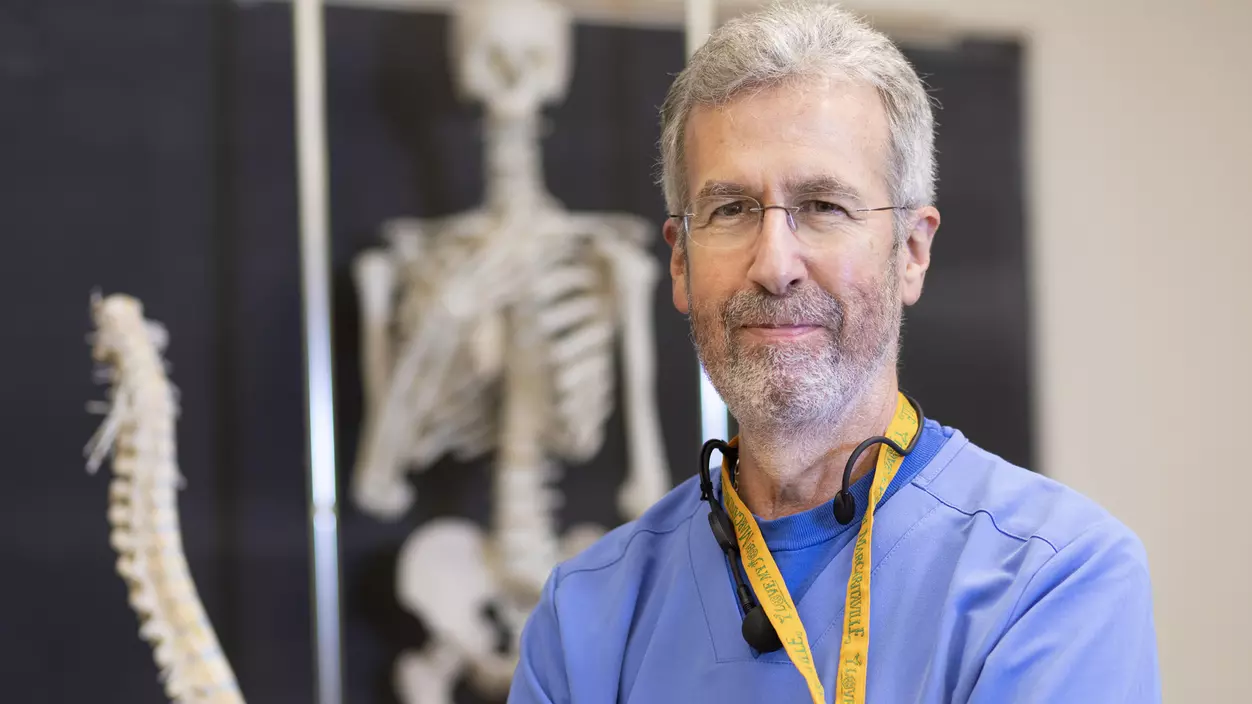CURB THOSE LOCKDOWN HABITS
The pandemic has amplified inactivity; those “Quarantine 15” pounds are a sign to get moving. Allen suggests finding exercise you truly love—preferably, aerobic and low-impact—so you’ll want to keep doing it. Motion is especially key for those still working from home: “Sitting is hard on your back,” says Allen, “and if we maintain maladaptive postures, we create new pain sources.” His advice? Get up every 15 minutes for some spinal extensions, stretching, and shoulder rolls. (Allen incorporates “postural breaks” for his students during his three-hour anatomy class.)
BE KIND TO YOUR MIND
When someone is stressed, explains Allen, their nervous and endocrine systems are overridden—and these are the two systems that are supposed to keep everything regulated. When this happens, no organ system is immune from harm; elevated blood pressure will be nearly unavoidable.
REALLY, LOWER THAT STRESS
Allen studied the cause of flare-ups for those who suffer from chronic neuropathic pain, like migraines and fibromyalgia, and learned that pain can peak as much as 10 days after enduring a stressful situation. (That’s how long it takes for thyroxine, a hormone released during stress, to break free from its protein bonds.) “This lifts the veil off the cause,” says Allen. “It helps patients predict and plan for future flares.”
ALL IN YOUR HEAD?
Allen has explored how the brain relies on an intricate, powerful network called the neuromatrix to relay pain through the central nervous system. “We’re seeing more of the brain becoming involved with pain, which means any time we activate other areas of the brain, it can trigger the memory of the pain.” That means something like chronic stress could stimulate the neuromatrix into making people think there’s a problem somewhere. But stay positive: The brain’s internal mapping system can change over time through new sensory experiences and memories.
LISTEN TO YOUR BODY
If there’s an ache or pain, pay attention. “Pain is meant to be very unpleasant,” says Allen, explaining that this sensory pathway is tremendously important for survival. “It’s a signal to stop doing whatever it is that you’re doing to cause damage—and learn not to do it again.”









